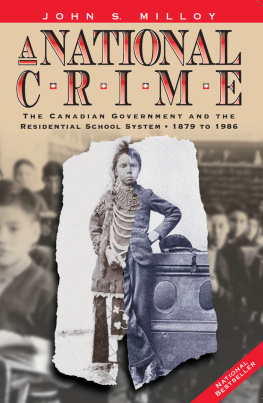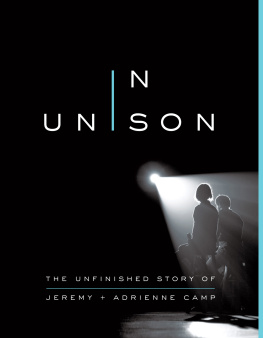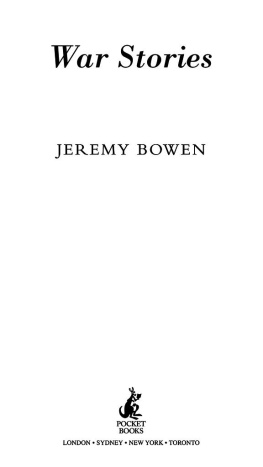Jeremy Milloy - The Violence of Work
Here you can read online Jeremy Milloy - The Violence of Work full text of the book (entire story) in english for free. Download pdf and epub, get meaning, cover and reviews about this ebook. publisher: University of Toronto Press, genre: Politics. Description of the work, (preface) as well as reviews are available. Best literature library LitArk.com created for fans of good reading and offers a wide selection of genres:
Romance novel
Science fiction
Adventure
Detective
Science
History
Home and family
Prose
Art
Politics
Computer
Non-fiction
Religion
Business
Children
Humor
Choose a favorite category and find really read worthwhile books. Enjoy immersion in the world of imagination, feel the emotions of the characters or learn something new for yourself, make an fascinating discovery.
- Book:The Violence of Work
- Author:
- Publisher:University of Toronto Press
- Genre:
- Rating:4 / 5
- Favourites:Add to favourites
- Your mark:
- 80
- 1
- 2
- 3
- 4
- 5
The Violence of Work: summary, description and annotation
We offer to read an annotation, description, summary or preface (depends on what the author of the book "The Violence of Work" wrote himself). If you haven't found the necessary information about the book — write in the comments, we will try to find it.
The Violence of Work — read online for free the complete book (whole text) full work
Below is the text of the book, divided by pages. System saving the place of the last page read, allows you to conveniently read the book "The Violence of Work" online for free, without having to search again every time where you left off. Put a bookmark, and you can go to the page where you finished reading at any time.
Font size:
Interval:
Bookmark:

Edited by Jeremy Milloy and Joan Sangster
From mining to sex work and from the classroom to the docks, violence has always been a part of work. This collection of essays highlights the many different forms and expressions of violence that have arisen under capitalism in the last two hundred years, as well as how historians of working-class life and labour have understood violence. The editors draw together diverse case studies, integrating analysis of class, age, gender, sexuality, and race into the scholarship.
Essays span the United States and Canadian border, exploring gender violence, sexual harassment, the violent kidnapping of union organizers, the violence of inadequate health and safety protections, the culture of violence in state institutions, the mythology of working-class violence, and the changing nature of violence in extractive industries. The Violence of Work theorizes and historicizes violence as an integral part of working life, making it possible to understand the full scope and causes of workplace violence over time.
JEREMY MILLOY is the W.P. Bell postdoctoral fellow in Canadian studies at Mount Allison University.
JOAN SANGSTER is a professor in the Department of Gender and Womens Studies at Trent University.
New Essays in Canadian and US Labour History
EDITED BY JEREMY MILLOY AND JOAN SANGSTER
UNIVERSITY OF TORONTO PRESS
Toronto Buffalo London
University of Toronto Press 2021
Toronto Buffalo London
utorontopress.com
Printed in the U.S.A.
ISBN 978-1-4875-0467-0 (cloth) ISBN 978-1-4875-3068-6 (EPUB)
ISBN 978-1-4875-2343-5 (paper)ISBN 978-1-4875-3067-9 (PDF)
Library and Archives Canada Cataloguing in Publication
Title: The violence of work : new essays in Canadian and US labour
history / edited by Jeremy Milloy and Joan Sangster.
Names: Milloy, Jeremy, 1979, editor. | Sangster, Joan, 1952, editor.
Description: Includes bibliographical references.
Identifiers: Canadiana (print) 20200311980 | Canadiana (ebook)
20200312561 | ISBN 9781487504670 (cloth) | ISBN 9781487523435
(paper) | ISBN 9781487530686 (EPUB) | ISBN 9781487530679 (PDF)
Subjects: LCSH: Violence in the workplace Social aspects Canada
History. | LCSH: Violence in the workplace Social aspects United
States History. | LCSH: Violence Social aspects Canada History. |
LCSH: Violence Social aspects United States History. | LCSH:
Working class Canada Social conditions. | LCSH: Working class
United States Social conditions. | LCSH: Labor Canada History. |
LCSH: Labor United States History.
Classification: LCC HM1116 .V56 2021 | DDC 363.32 dc23
University of Toronto Press acknowledges the financial assistance to its publishing program of the Canada Council for the Arts and the Ontario Arts Council, an agency of the Government of Ontario.

One of the biggest joys of working on an edited collection, especially for often solitary historians, is the connection and collaboration with other scholars. The editors first of all thank their co-authors for contributing their research and expertise to this project and for their enthusiasm and professionalism throughout this process. We also thank Mason Godden, who did crucial work formatting and preparing the manuscript for submission.
This project began as a proposal to host a workshop at Trent University. In that, the editors were supported by the generosity of the Symons Trust, the Frost Centre for Canadian Studies and Indigenous Studies, and the Department of History. We thank these funders and supporters for helping make this project a reality.
That what you are reading now exists is in large part because of the hard work of many people at the University of Toronto Press. Len Husband championed this project and guided it through peer review. Alexandra Grieve led the elegant design of a book containing much ugliness. Janice Evans and Matthew Kudelka devoted skill and rigorous dedication to editing our prose. We offer grateful thanks to them and to everyone at UTP.
We thank you for reading this book, which is dedicated to working people everywhere.
JEREMY MILLOY
This book, being about work, is, by its very nature, about violence to the spirit as well as to the body.
Studs Terkel, Working (1972)
In the mid-1990s, Margery Wardle was a heavy equipment operator for the City of Nepean, Ontario. She loved her career. She was really proud of what I did for a living, she reflected in 2018, long after it had been taken away from her. On the job, Wardle worked in an environment where pictures of women portrayed as sex objects were posted up. Her own sexuality was questioned and bandied about. She was followed into the washroom. She was grabbed while at work. When she fought this, she got nowhere. Her harassers were promoted. After she spoke out about her treatment, retaliation made her working life unbearable. She left the job and was diagnosed with anxiety, depression, and post-traumatic stress disorder As Sarah Jessup details in this volume, Ontarios labour law prohibits harassment and the creation of a toxic workplace environment. Yet the provinces Workplace Safety Insurance Board denied Wardles claim for benefits, claiming that interpersonal conflict is a typical feature of normal employment and is generally not considered to be a substantial work-related stressor. Despite legislation and policy, workplace violence is persistent, contested, and unsettled.
Wardle is not alone. Workplace violence is a major problem for working people today. In 2016 there were five hundred workplace homicides in the United States, which accounted for one of every ten occupational fatalities. In a 2015 survey, 45 per cent of Canadian workers polled reported experiencing bullying in the workplace; more than one-quarter of these workers left their jobs in response. In the United States, 27 per cent of those surveyed reported direct experience with abusive conduct at work. Victimization in the Workplace, a 2007 Statistics Canada study, reported that almost 20 per cent of incidents of violent victimization occurred in the victims workplace.
While workplace violence has often been framed as a new or growing problem, workers under capitalism have always experienced violence on the job. Workplace violence has been decried by trade unionists and socialists since the nineteenth century and has often been understood as embedded in the profit motive of capitalism. In that century, the primary forms of violence at work involved mass violence inflicted by bosses, their private armies, and the state against unionizing or striking workers; by strikers against scabs, and vice versa; by strikers versus police and militia and, as the bloody backdrop to all of these conflicts, the death, disease, and dismemberment of working people that underwrote economic development in the industrial age. Over the twentieth century, the dominant trope of workplace violence shifted from mass to individual, with lone workers directing aggression against bosses, co-workers, and customers, a shift I tracked in my book
Font size:
Interval:
Bookmark:
Similar books «The Violence of Work»
Look at similar books to The Violence of Work. We have selected literature similar in name and meaning in the hope of providing readers with more options to find new, interesting, not yet read works.
Discussion, reviews of the book The Violence of Work and just readers' own opinions. Leave your comments, write what you think about the work, its meaning or the main characters. Specify what exactly you liked and what you didn't like, and why you think so.












